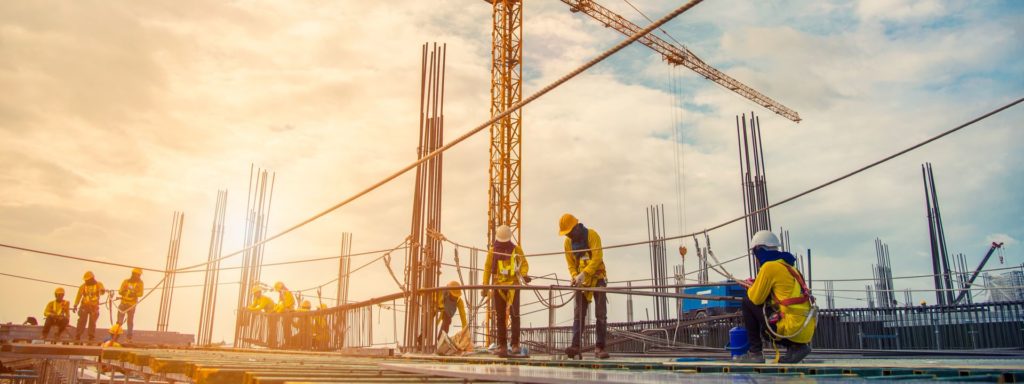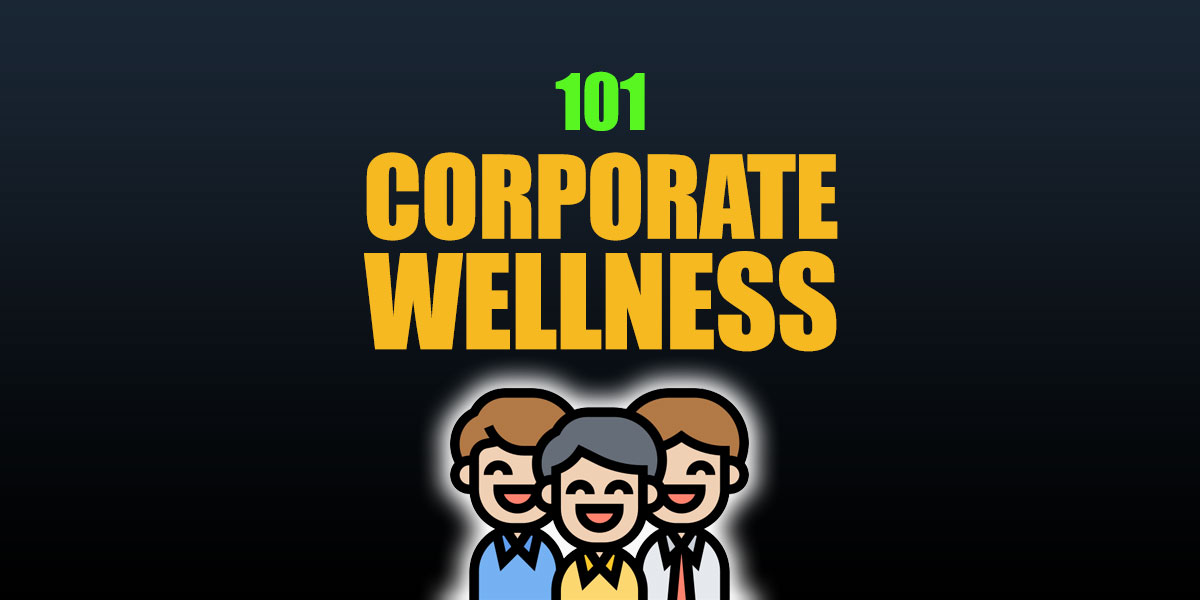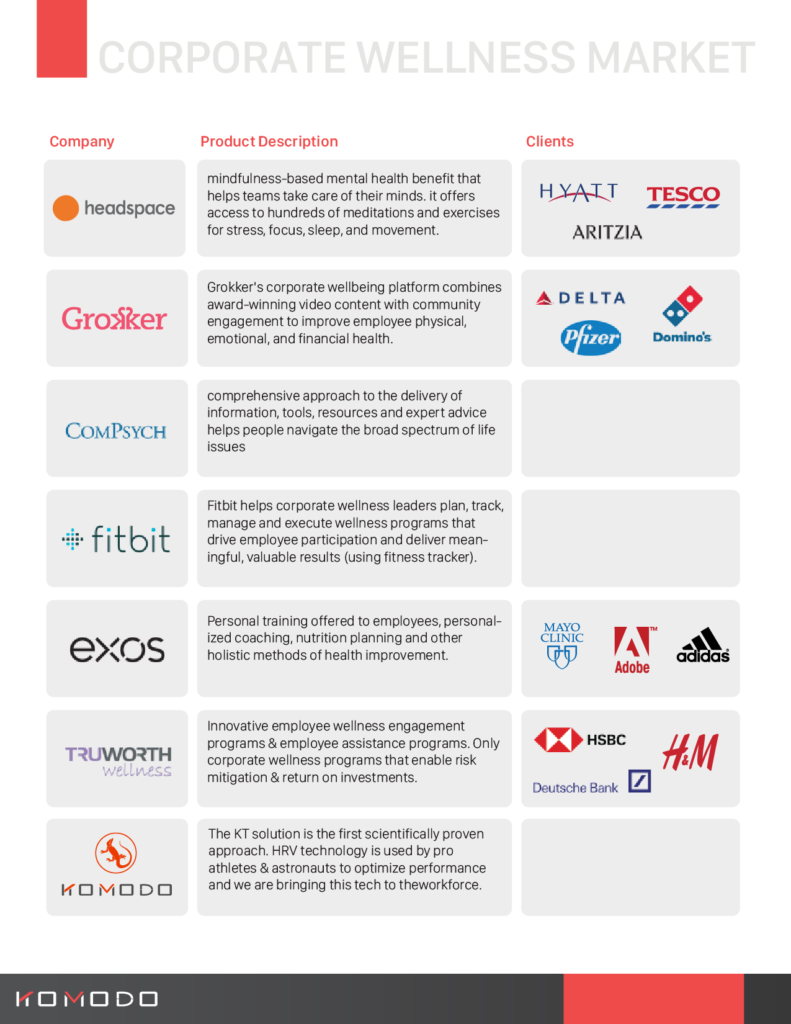Having the right corporate wellness solutions is crucial for any company’s success in this day and age. Employees have more leverage in the marketplace than ever before. Since the end of our global health crisis, companies have faced challenges in terms of bringing on new people to work. Everything from government benefits to new remote working opportunities have been major drivers of this slow migration back to the office. The harsh reality (for some) is that individuals are less motivated by higher salaries and place more value on being part of a culture that means something. And a big part of that means employers need to focus on all aspects of employee health and wellness.
As a company that provides health improvement services to corporations, we have seen a significant shift in corporate wellness policy around the world. No longer are we treated as some type of machinery that just needs some tune ups when it breaks down. We, as individuals, are the most important asset any company has and more employers and shareholders are realizing this now.
EMPLOYEE WELLBEING AND WELLNESS PROGRAM
Although the culture has shifted, implementation lags behind. In other words, we are talking about it, but many large companies (in North America) still have not taken necessary steps to look out for the mental health and strain of their employees. Of course, companies like Microsoft, Apple, Google, Facebook and the like, are going above and beyond. But these Silicon Valley behemoths live in their own bubble where they try to attract workers from a small list of candidates.
We’re talking about true employee empowerment. Unions was the first step and now this. 90% of workers say they would recommend a place of work if it had a good corporate and employee wellness program. Job seekers now have enough power and option to look at what health related programs potential employers are offering. Aside from Silicon Valley, current wellness incentive programs for employees could include rest areas at work, fitness memberships, smoke cessation programs, on-site counselling, etc.
However, the key word in this section is “incentive”. As the old saying goes “if you build, they will come”, doesn’t exactly work. So just because an employer just outsourced its wellness program, sent an email to everyone, doesn’t mean employees will be excited to use it. We’ve seen this problem first hand, MANY times. We’ve toured facilities where dust piled up on medical machinery the company purchased for people to use. And empty game rooms with a ping pong table with no net.
At the end of the day, as a company or HR department, you need 3 things: 1) A wellness plan, 2) the right people and 3) engagement. What will I get from this wellness incentive program? You need to communicate so that people are excited to use equipment or facility or a fitness tracker to track steps. Because the two main goals of any corporate wellness program are better and efficient performance for the employers, and better health / moral for employees. There’s no reason these two can’t coincide.
CORPORATE WELLNESS SOLUTIONS
Nearly 60% of organizations in the United States offer some form of corporate wellness solutions. That number looks great, but don’t get it confused. Putting up a bulletin with a phone number to a crisis hotline counts as a wellness program. There are levels to this and not all workplace health programs are built the same. While some incredible corporate wellness technology begins to appear, many company leaders aren’t eager to be early adopters.
Google is widely considered the Crème de la crème, and the originators of incredible workplace environments. Everything from a free bagel bar on the first floor, to swimming pools and nap pods. They truly revolutionized the game when they were first starting out in the early 2000’s
MENTAL HEALTH IN THE WORKPLACE

As people become wiser, they might need more than the glitz and glamour of free bagels and foot rubs at work. Mental health, stress and anxiety are real, and companies are now doing more to help people at work. Some organizations are beginning to offer on-site counselling. While some simply have it as a third-party which you could contact at any time.
There are, however, some issues with this topic. Mental health and stress in the workplace is a tricky topic. As an employer, you can do all of the things you think are necessary but still not know if anything is working. This is where the next, and final phase of workplace wellness comes in to play. The final piece of the puzzle that will bring all of the current programs together, allow for true health improvement and a fully optimized workplace from top to bottom. That final piece is wearable technology and health devices in the workplace.
HR TECH 2025 AND BEYOND…
We always felt that something was still missing from today’s corporate wellness programs, especially lack of technology adoption. Although there are still offices which utilize wearable technology and medical devices, it’s under-utilized and inefficient.
For example, one of the companies we visited had one blood pressure monitor station in the breakroom for the entire office. This company has nearly 700 employees and were paying thousands of dollars per month to have this thing in their office, up and running. Unfortunately, this isn’t the only example of wasted resources and unused health devices in an office that we’ve seen.
CORPORATE FITNESS PROGRAMS – FITBIT
This is probably the most prominent example that we have of wearable technology in the workplace. However, Fitbit devices aren’t really used for in depth health analytics. But rather for engagement, encouragement and getting people excited to get up and walk. Having a comprehensive corporate fitness program that gets people moving, exercising and eating healthy is a must!
As we’ve said before, Fitbit products are simply motivational devices and should not be used as a real health tool. That’s not to say it isn’t a great tool to motivate people in the workplace. Their products are used in many workplaces to encourage healthy competition. Companies have weekly / monthly competitions of who will have the most steps. They post the leaderboard and hand out prizes to the winner(s).
Surely there are wearables and solutions out there that give us real data and true insight into the health of each unique individual.
HEART RATE VARIABILITY (HRV)
HRV has quickly become a gold standard among the health community. It has exploded onto the scene in the past 5 years. Pioneered by smaller tech companies like WHOOP and KOMODO Technologies. However, now, even tech giants like Apple and Fitbit have joined the party.
While HRV monitors and consumer devices have only recently become popular, it’s been around for decades with more than 10,000 studies to show for its efficacy.

Heart rate variability is the only tool on the planet that can actually gauge our stress levels. It works by measuring the time difference (variability) of each successive heartbeat, usually taken from an electrocardiogram (ECG / EKG). If the heartbeat is volatile, HRV is high, and that’s a good thing. If your heart beat is very static, like a metronome, HRV is low, which is not good.
HRV is used to detect stress responses from your autonomic nervous system. This is the part of your nervous system that controls involuntary actions such as sweat, digestion, kidney function, etc. It is an invaluable tool in the workplace. It is used to detect stress in real-time. And if it is happening too often, you can take the necessary measures to reduce stress in the long term.
HOW TO USE IT IN THE WORKPLACE
With the right product, HRV is very easy to use. Most HRV monitors nowadays are bracelets and bands anyway. The good thing is that you don’t have to constantly measure it. You’re looking for a trend throughout the day. Where in the day is stress the highest and when is it lower. Its usually best to measure in the morning, during breaks, before and after lunch and before you go home. Then you can measure it at home before bed and in the morning when you wake up.
This way, not only are you gauging your stress throughout the day, but also how your diet and food choices are affecting you. It’s a complex topic to think about but once everything is up and running, it’s very easy to follow.
HRV BENEFITS IN THE WORKPLACE
The benefits are endless. Long term depression and mental health issues start with short-term bursts of high stress during our daily lives. We usually just go about our days but these things do pile up. If you have a tool like HRV where you can see when it happens in real-time, you can save yourself from hardship in the future. It might mean some extra time off now to prevent weeks of absence in the future.
Employee wellness programs exist to try and help curb the high cost of health care and medical insurance (especially in the US). Using HRV daily is like having a daily car check up on your vehicle. Instead, most of us wait till our cars (bodies) break down and we need urgent care.
CURRENT APPLICATION?
During the height of the pandemic, OURA partnered with the NBA to provide players with a smart ring capable of many health-related readings. One of them being heart rate variability. They made it a big part of the NBA health and safety protocol. However, after several months, it was evident that this was simply paid PR by OURA and that no one even touched their products. While unfortunate, there are actually other industries that are using high-end health metrics and are paving the way for the future.
CONSTRUCTION AND MINING | WORKSITE WELLNESS PROGRAMS

When it comes to mining and construction, workers are even more important than the millions of dollars’ worth of machinery. These companies are well aware of this fact, and that’s why employees are equipped with just as many sensors as the machines.
Construction workers deal with grueling work, extreme outdoor conditions and long hours. Miners deal with constant changes in air pressure, oxygen levels and humidity. These factors have significant effects on their bodies. Workers are unlikely to say anything due to the risk of sounding “soft” and be put on the naughty list of the company. This is another reason it’s so important to have the right employee wellness technology on the construction site and in the office.
There is a ton of incentive for construction and mining companies to optimize the health of their employees. HRV can tell employers if a worker is being over worked. That kind of strain is not good for the individual or the company. Moral of the worker goes down, not to mention other potential health risks. And for the organization, productivity goes down significantly. This leads to more hours worked and lower efficiency.
WHAT PRODUCTS ARE OUT THERE?
KOMODO Technologies has a multitude of workplace wellness technology solutions available for many sectors. Several construction companies and corporate offices in Canada and the US currently use the AIO Smart Sleeve by KOMODO. It’s a smart compression sleeve that monitors a wide range of health biomarkers. This includes movement, heart rate, SPO2 and of course, heart rate variability. The individual in charge (be it HR or site supervisor) has every employee’s health stats on one screen and can monitor the numbers daily.
AIO Health Bar
KOMODO is also rolling out a new product called the AIO Health Bar. One stand-alone unit placed in the office or on a worksite that allows quick and easy, on-demand stress testing. Each worker has their own unique log in, and they all measure on the same device. Simply walk up to the Health Bar, plug in your unique ID, hold the handles for 2 minutes, and that’s it! Once the test is complete, the AIO Health Bar will automatically log out and prepare for the next user.
Workers get to see their HRV, and HR receives a report regarding daily trends of stress withing the company.
CORPORATE WELLNESS COMPANIES
We’ve put together a list of North American corporate wellness companies that provide a different variety of health and wellness services. Have a look.
BEST (OPTIMAL) EMPLOYEE WELLNESS PLAN
Slowly but surely, corporate wellness is inching towards the use of wearable technology in the workplace. This is not to say that current employee wellness plans are bad. But they can be better. Wearable technology allows you to quantify your efforts. In other words, to show you that what you’re doing is helpful (as an employee or HR professional). Wearable technology IS the future of workplace health and safety and HRV is a big part of that. It’s time to put the “HR” in “HRV”


